Pseudoperonospora cubensis
Downy mildew causes angular, yellow to brown lesions on top of the leaves that are restricted by leaf veins. When conditions are favorable, for example early in the morning when moisture is higher, lesions observed on the underside of the leaf may be covered in dark “down”. This downy growth is masses of pathogen spores called sporangia, which can be seen in the field with a 20X hand lens. In the presence of water sporangia can directly germinate or differentiate into swimming zoospores that infect leaves. Identification of downy mildew in cucumber can generally be done in a field setting due to the characteristic angular lesions and pathogen sporulation in the underside of the leaf. However, in crops such as watermelon and cantaloupe where lesions do not always have the characteristic angular shape, sporulation can be scarce and diagnostics can be more difficult.
Diagnostic Resources
APS Diagnostic Guide
- Diagnostic Guide for Cucurbit Downy Mildew
by: Andres Salcedo, Mary Hausbeck, Stacey Pigg, and Lina M. Quesada-Ocampo
Plant Health Progress: Vol. 21, No. 3
Disease Control Information
- Better Know a Pest: Downy Mildew of Cucurbits – Smart Lab at Cornell Vegetables (video)
- Cornell Cucurbit Downy Mildew Management Guidelines – Cornell Vegetables (2017)
- Downy Mildew News – Hausbeck Plant Pathology Research Lab at Michigan State University
Monitoreo y Manejo del Añublo Lanoso de las Cucurbitáceas – Spanish translation - Downy mildew on cucurbits: Early symptoms – McGrath Lab at Long Island Research and Extension Center, Cornell University
- Downy mildew on cucurbits: Other symptoms and imitators – McGrath Lab at Cornell Vegetables
- The Cucurbit Downy Mildew Forecast ipmPIPE -USDA NIFA (2007 – 2019)
- Resources for commercial growers: Downy Mildew – Smart Lab at Cornell Vegetables
- Vegetable Pathology Lab Factsheets – Quesada-Ocampo Lab at North Carolina State University
Cucurbit Downy Mildew – NC State Vegetable Pathology Factsheets
Añublo lanoso en cucurbitáceas – NC State Hoja informativa de patógenos de vegetales
Plant Disease Management Reports
- Evaluation of fungicides for management of winter squash downy mildew, Kinston 2021.
- Evaluation of fungicides for control of downy mildew of winter squash, Kinston 2020.
- Evaluation of cultivars for control of downy mildew on squash, Kinston 2018.
- Evaluation of fungicides for control of downy mildew of winter squash, Kinston 2017.
- Evaluation of cultivars for control of downy mildew on squash, Kinston 2017.
Images of Downy mildew on Pumpkin (Cucurbita maxima)

Downy mildew causes tiny orange-yellow spots on giant pumpkin. Image by Margaret McGrath, Long Island Horticultural Research & Extension Center
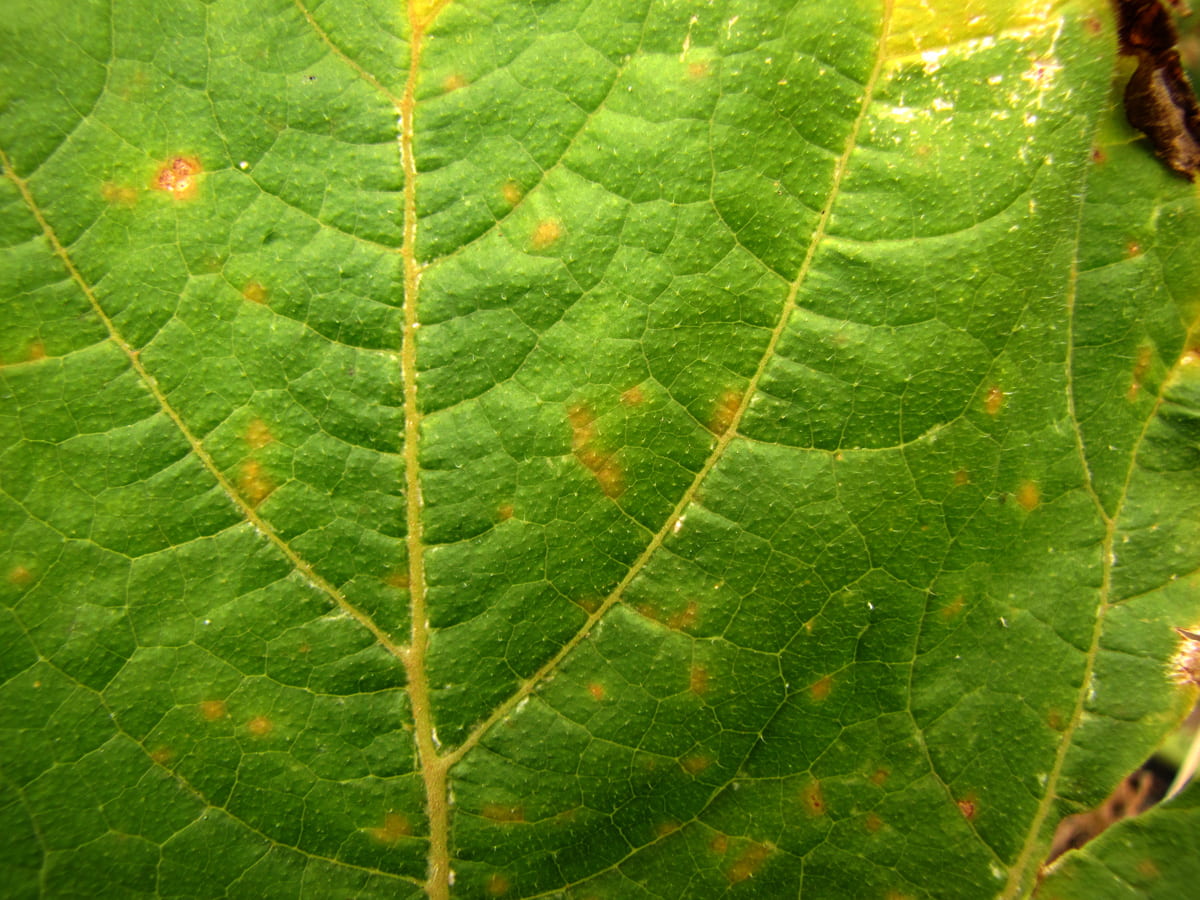
Downy mildew causes tiny orange-yellow spots on giant pumpkin. Leaves often need to be examined closely to see these symptoms.Image by Margaret McGrath, Long Island Horticultural Research & Extension Center
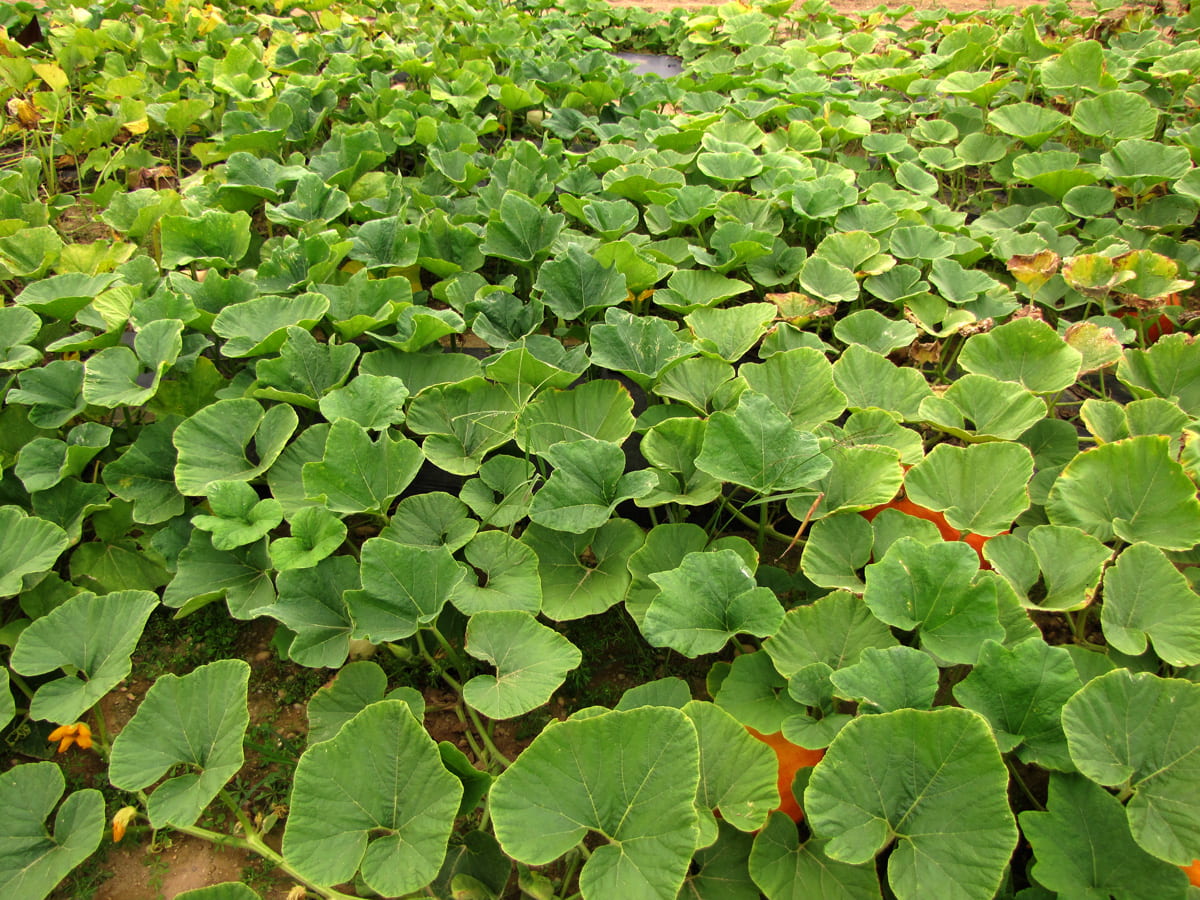
Downy mildew symptoms are present on some leaves in the field shot above; the image needs to be enlarged greatly to see them. The downy mildew pathogen produces few spores on giant pumpkin leaves, thus the dark fuzzy (downy) fungal growth that commonly occurs on the underside of spots on cucumber and butternut squash leaves will not develop on these spots. Many spots may need to be examined with a microscope to find spores. Downy mildew is not as destructive on giant pumpkin as on other cucurbit crop types; affected leaves are not killed as rapidly. Images by Margaret McGrath, Long Island Horticultural Research & Extension Center
Images of Downy mildew on Halloween Pumpkin (Cucurbita pepo)
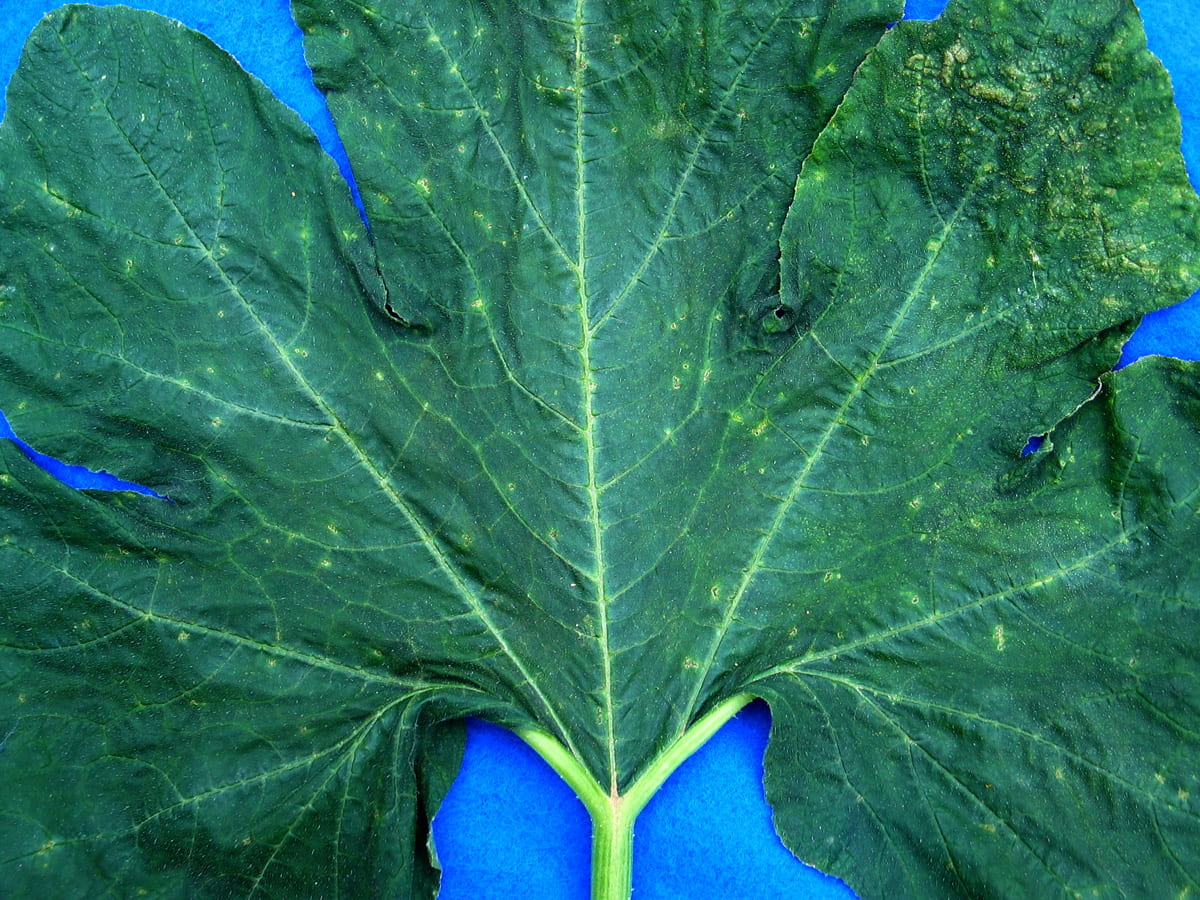
Small,faint, light yellow, angular spots on Cucurbita pepo.
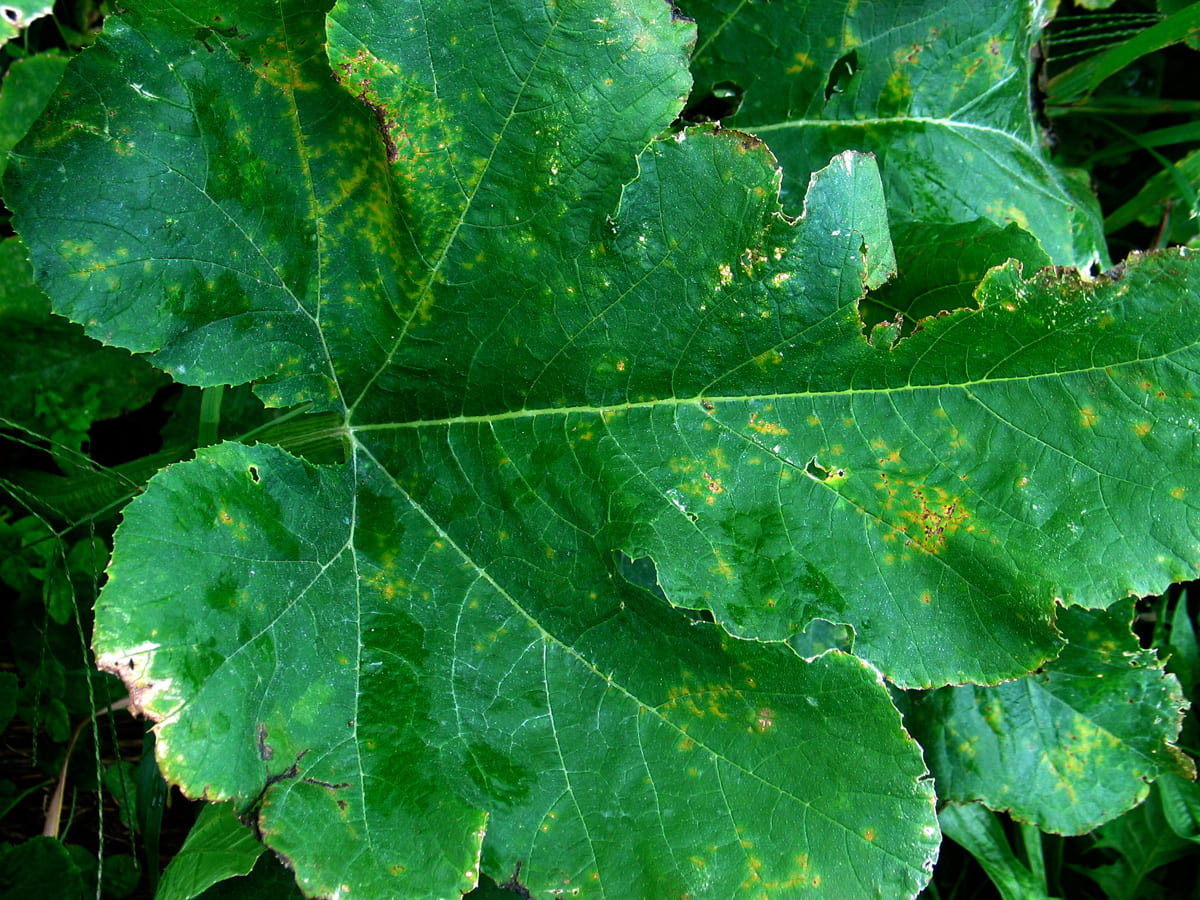
Small, orange-yellow, angular spots.
Symptoms of Downy mildew on Butternut Squash
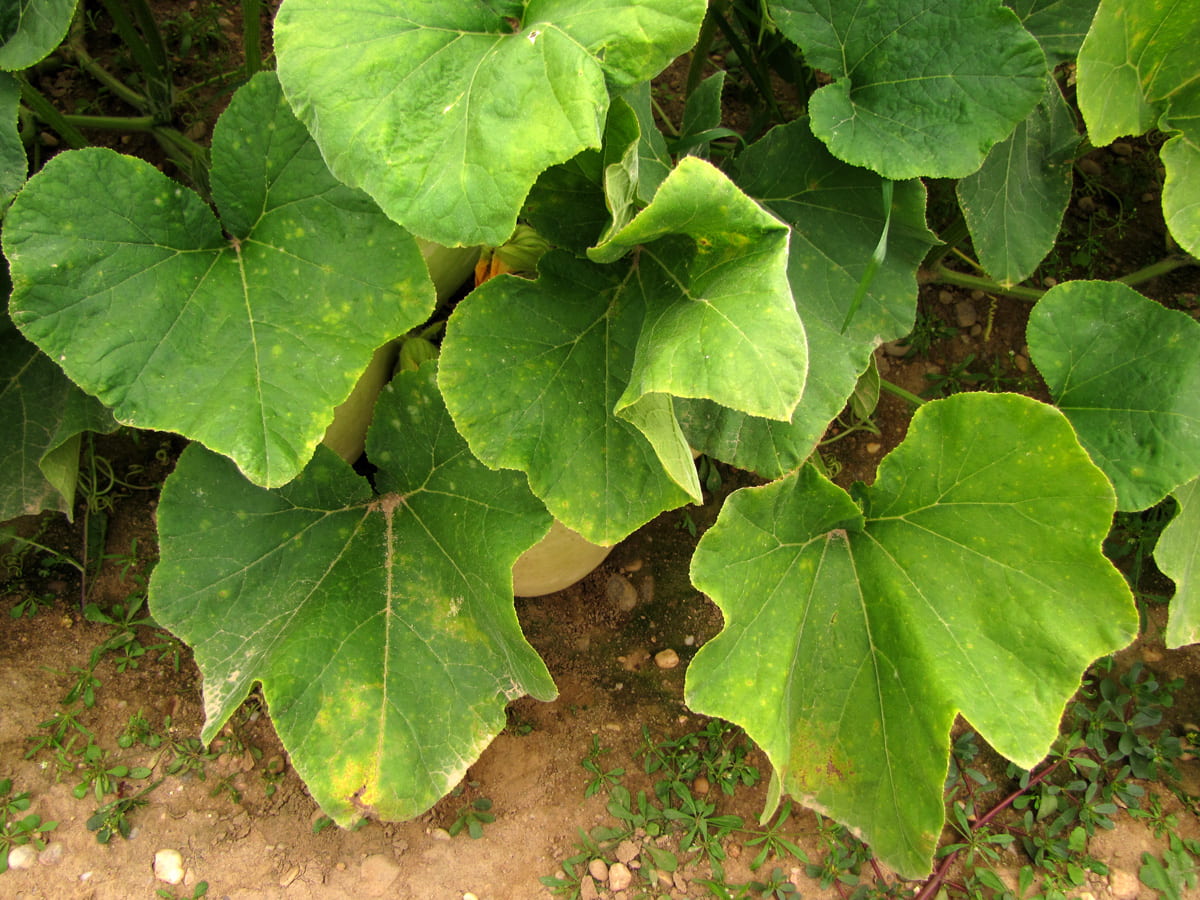
Symptoms begin as tiny spots with a yellow border. Spots can occur in clusters. Very early symptoms tend to lack the angular appearance common for older symptoms. Image by Margaret McGrath, Long Island Horticultural Research & Extension Center.
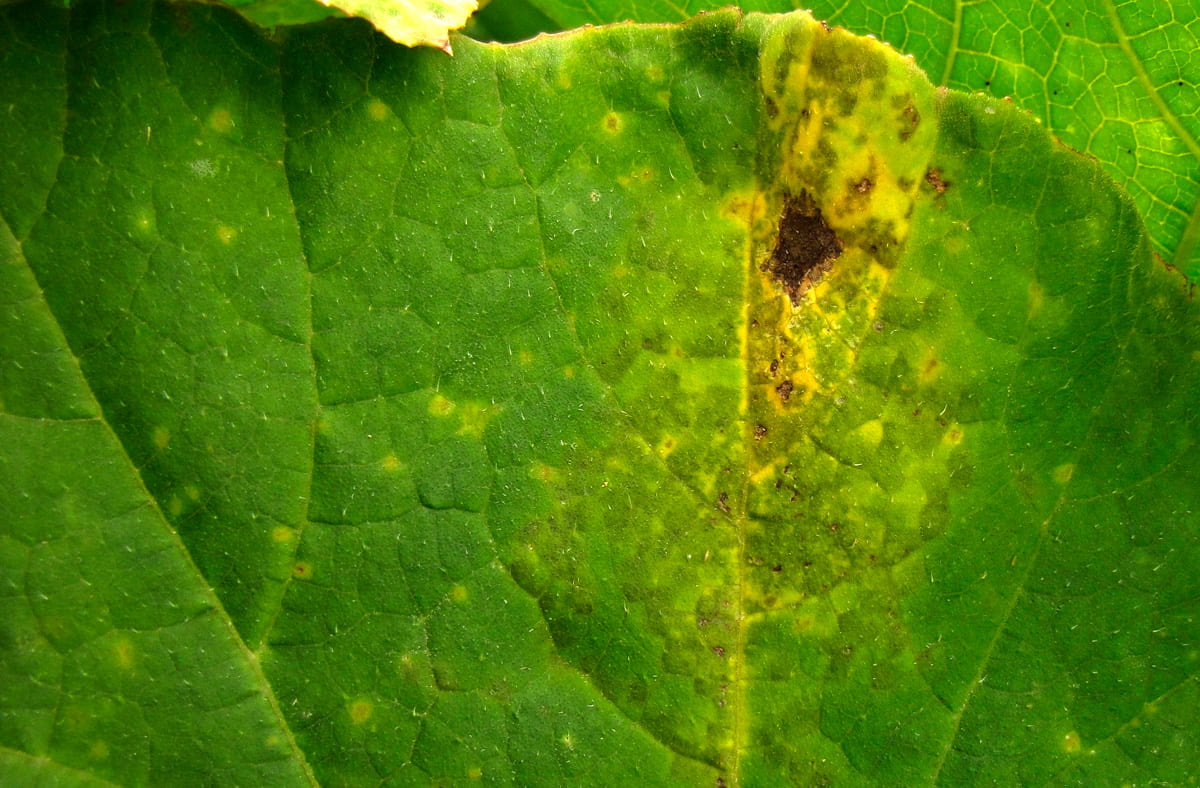
Individual yellow spots on the left side of this image tend to lack the angular appearance common for older symptoms. The spots in the cluster on the right side of this image are exhibiting some angular edges where their expansion was stopped by major veins in the leaf. Image by Margaret McGrath, Long Island Horticultural Research & Extension Center.
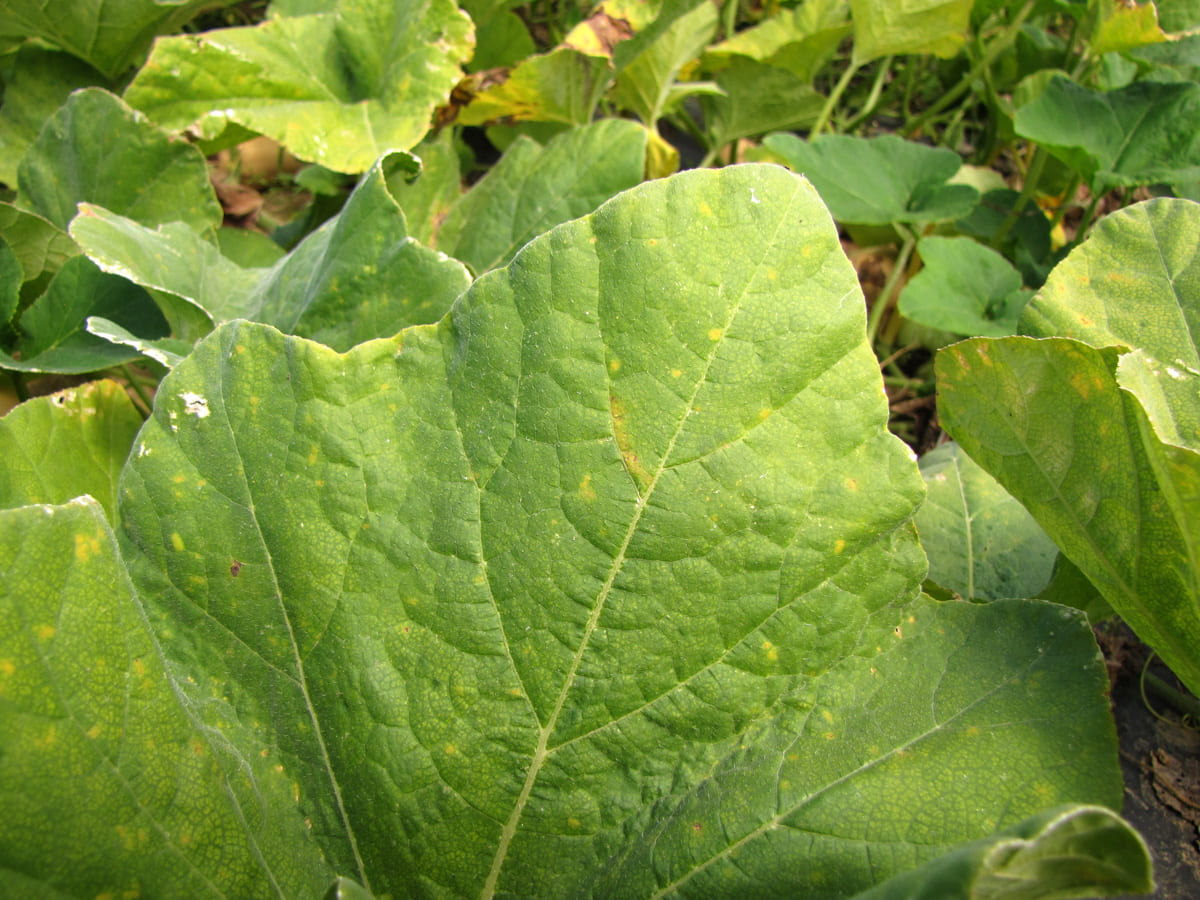
Symptoms of Downy mildew on a butternut squash leaf. Image by Margaret McGrath, Long Island Horticultural Research & Extension Center.
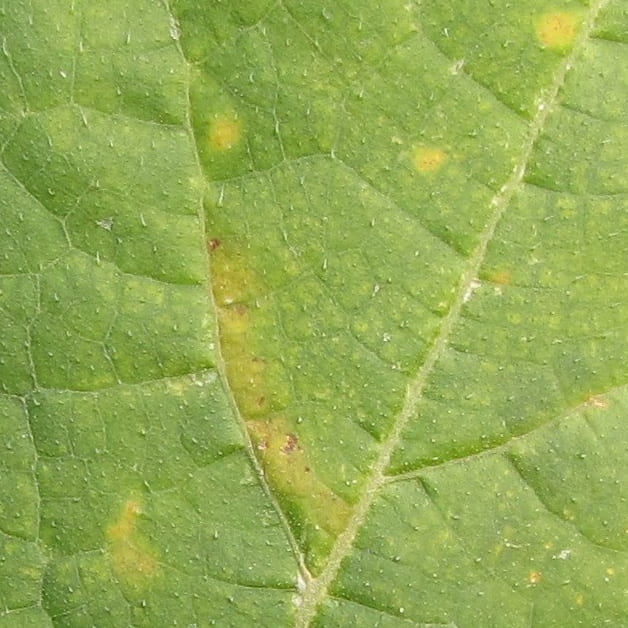
Close up of the leaf in the previous image; it shows the upper surface of the part of the leaf with the same symptoms. Image by Margaret McGrath, Long Island Horticultural Research & Extension Center.
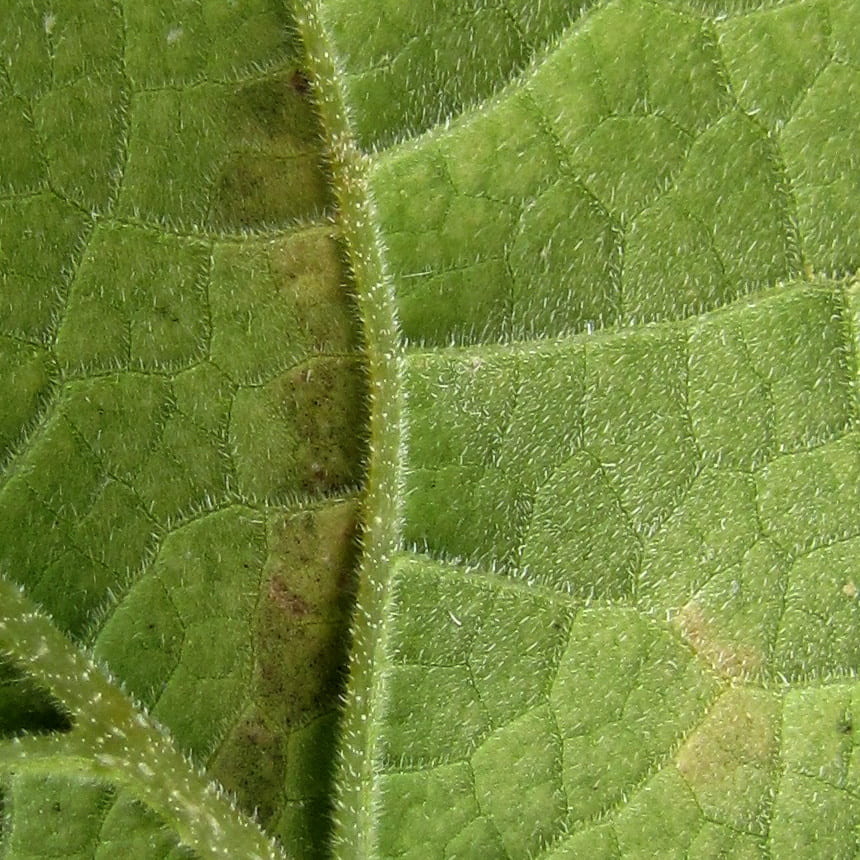
Close up of the leaf in the previous image; it shows the lower surface of the part of the leaf with the same symptoms. Image by Margaret McGrath, Long Island Horticultural Research & Extension Center.
